Starlink: Battle for Atlas Review
Exploring a new solar system has never felt so predictable
The flight genre – be that above Earth or in the depths of space – hasn't been at the forefront of the gaming industry for a while now. Whether it's simulations or arcade experiences, the genre has been largely dormant. Ubisoft is looking to change that with Starlink: Battle for Atlas, an intergalactic adventure letting players assume control of a brave group of pilots who have set out to explore a new solar system. Featuring surface and space battles, the new title offers some moments of engaging action and plenty of customization, but suffers from repetition and a dull story.
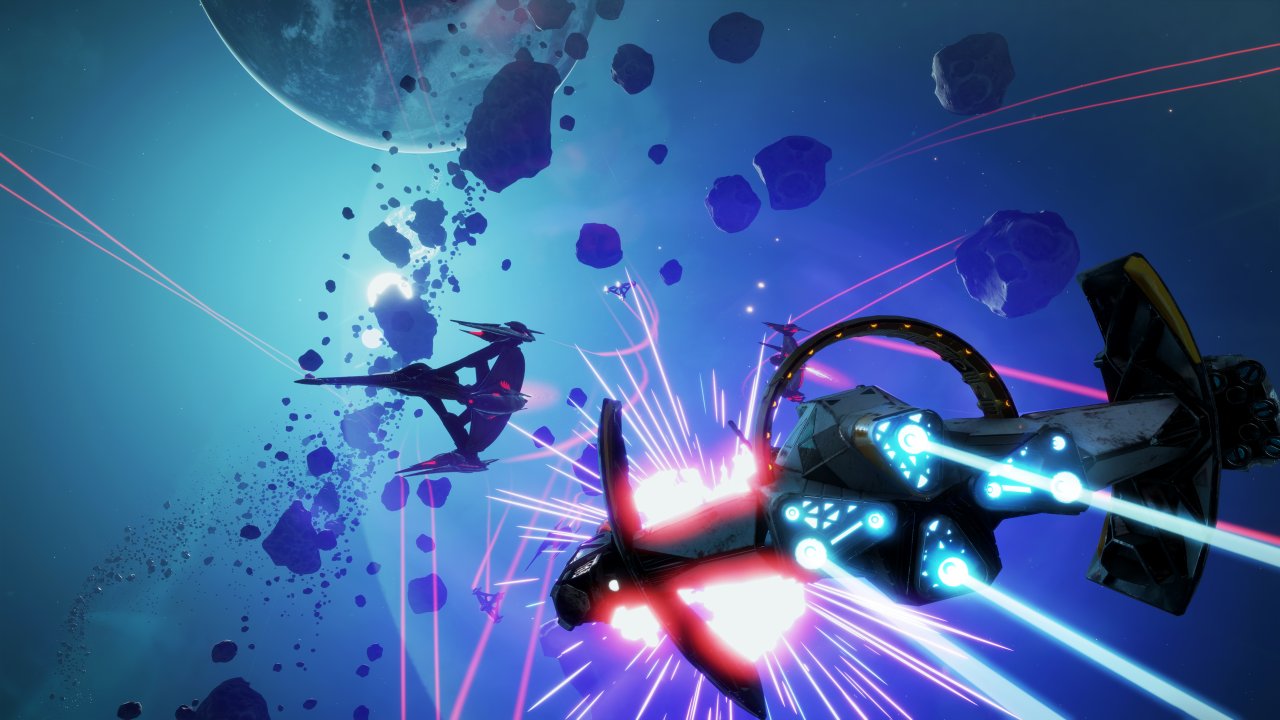
Something worth pointing out right away is that Starlink is actually a toys-to-life game, where the physical editions of the game come with an actual ship, pilot, a couple of attachment weapons, and the mounting kit that goes overtop your controller. You may remember this corner of the market – with the likes of Disney Infinity and Skylanders – offering players free-form experiences and selling additional physical toys and extras at retail. It has been a quiet few years though, as the genre eventually seemingly ran into trouble and was not viable for the big publishers anymore. So does Starlink usher in a resurgence?
Not exactly, and pricing has much to do with that. The retail Starter Pack comes with a single toy pilot, toy ship, and a couple of weapon attachments for $75. To get the rest of the items (whether digitally or physically) you'll need to keep paying. Going the physical toys route has negative gameplay implications as well – the starter pack only has 3 weapon element types, which means you're at a disadvantage in combat until you get more. Another example is that when you're defeated, you can respawn and continue the fight by choosing a different ship; with the physical editions you only have the one ship, so you have to reset to a safe location far away. But at least none of the in-game content is locked out by needing specific pilots or ships. We did not have a chance to inspect the physical items for this review, but regardless of the toy quality, it's just extremely unlikely that the physical version of Starlink is in any way a good value. This review is based on the $80 USD Digital Deluxe edition, which includes all ships, pilots, and weapons that the game has to offer. But the best choice is probably the $60 USD regular Digital Starter Pack, which has fewer pilots/weapons/ships than Deluxe, but you'll be fine without those extras.
The story follows a group of explorers that set out to the Atlas star system, the home system of an alien named Judge that crash lands on Earth and is found by scientist Victor St Grand. Together with this alien, Victor creates a fuel called Nova that allows faster-than-light travel, and forms the organization known as Starlink Initiative. The game utilizes a "tell, don't show" approach with all of this background information; the actual story picks up when Victor is kidnapped by Legion, a cult-like group led by a mysterious villain Grax, who's looking to force Victor to create Nova and take control of some powerful ancient technology.
Starlink's tale is fairly shallow and straightforward, as the crew try to find and rescue Victor, and defeat Grax and his forces. As you explore a few different planets in the Atlas system, you gain a few new allies and bring them back to your ship called The Equinox. The story cutscenes are fairly infrequent, though well done, and most of the dialogue is predicable and aimed at younger audiences. Not to say it's bad, just not very involving or memorable, and is rather brief when all is said and done.
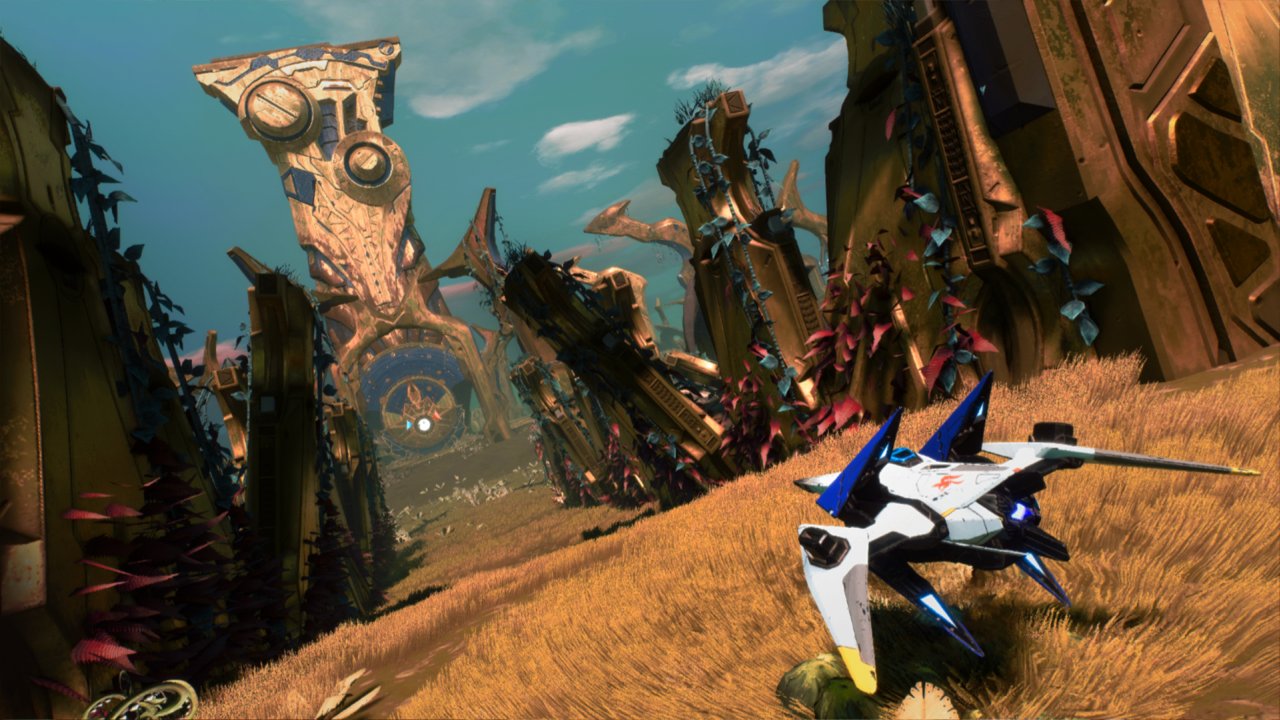
You get to assume control of one of the members of The Equinox. The gameplay difference between them is just a single aspect – the Pilot Ability, such as a powerful single attack or perk, like an orbital strike or becoming temporarily invisible. The ability recharges overtime and can be helpful, especially in larger battles. As for ships – you will have a choice of up to 5, all looking different and offering their own set of stats: speed, handling, defense, and energy. Last but not least, there are 15 different weapons in total, two of which can be attached to your ship at a time. You can further add a couple of extra wings to your ship, which affect your stats, but they also add to the weight. Players are free to customize their experience as all these elements - the pilot, the ship, the weapons/attachments – are interchangeable.
The two weapons you can attach to the ship feature different elements - kinetic, gravity, stasis, cold and heat. Some enemies are of course more susceptible to certain elements, such as Ice Giants being weak to fire, so you'll sometimes have to switch things out on the fly which is easy to do via the loadout menu. You can also combine different weapons for higher effectiveness, like catching enemies in a Fire Vortex or causing them to freeze and shatter. Weapons also come in a few types – precision or siege – which defines their projectiles being single-fire or more of a barrage. Further, your ship and weapons have a number of mod slots – ships have core, armor, and boosters, while weapons have ammo and amplifiers. Through the course of the game, you'll collect a ton of different mods, so swapping them in and out is a big part of the tweaking process. You can also fuse duplicate mods to create more powerful ones, as there are a few levels of rarity. The customization systems in Starlink are quite extensive, and helpfully, there are three ship loadout slots you can setup and switch between for faster adjustments.
You earn experience from combat and missions, which grants you an ability point to spend in each pilot's small passive skills tree – you could choose to invest in things like damage boost or reduction, shield recharge speed, and additional bonuses to your Pilot Ability. Each pilot has their own skill tree, which means you'll need to spend a lot of time to get a few of them leveled up (though there is a skill that lets you level up all pilots together). The process feels rather slow, and the enemies will be arbitrarily extremely powerful if you're far below their level. Earning new skill points is confusing at first – you actually get them by "familiarizing" a pilot with each ship and weapon (by keeping them equipped), rather than the more typical design of leveling a character directly. The ships and weapons can only provide so many skill points, and the XP requirement for subsequent points increases exponentially each time, so you'll have to swap weapons often to gain levels as efficiently as possible. It's a bit convoluted; the game could really benefit from a Help menu, which it surprisingly lacks given it's targeted at younger audiences. There are a few deeper mechanics that are explained too briefly, on pop-up screens (or worse, just during dialogue) that occur once and can't be viewed again elsewhere.
There are two primary methods of traversal – space flight and planet surface hovering. In space, you're free to fly in any direction, and the game does a good job of keeping you orientated with some solid controls. There isn't much to do though; you'll mostly be traveling between planets, and sometimes come across debris with goodies that emit a beacon visible from a distance. The loot also often attracts Outlaws, letting you engage in some basic space combat. As such, you'll spend a most of your time on planet surfaces.
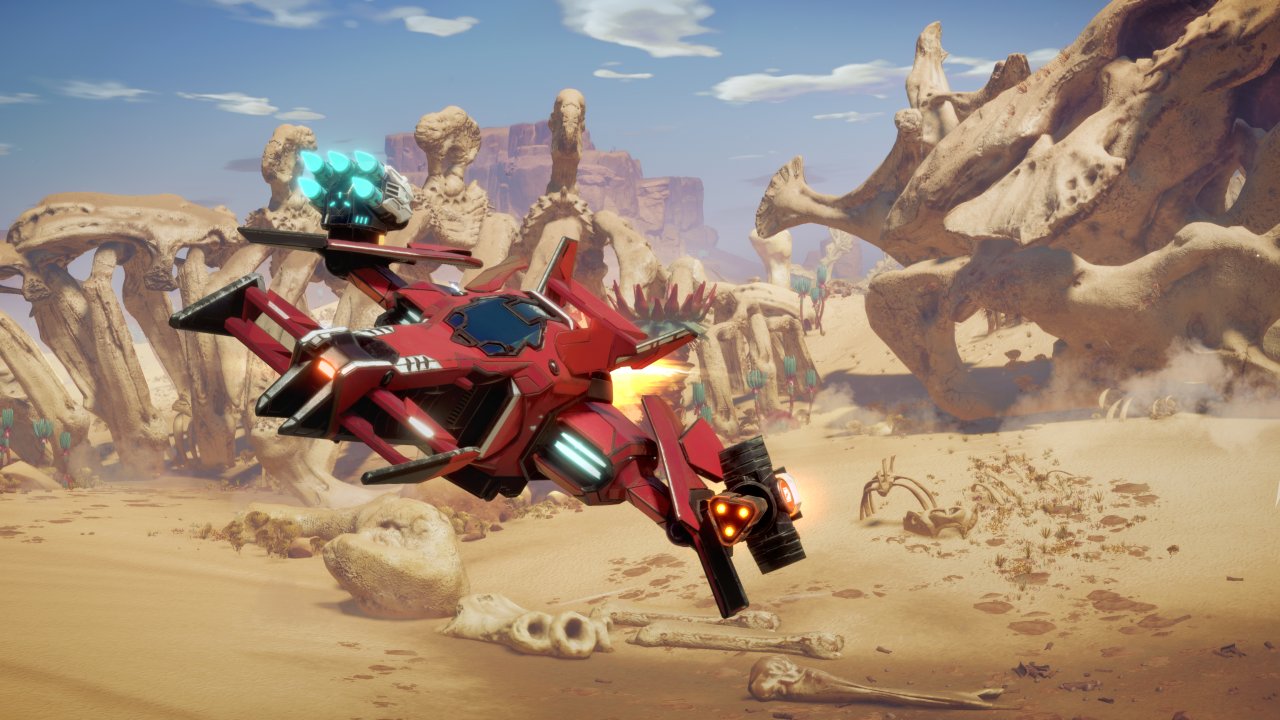
The controls of your ship while hovering on the surface are similar to that of Destiny's Sparrows - offering decent amount of precision, but also being somewhat floaty at times and at slower speeds. The game surprisingly lacks a scan function, which would fit well in the setting, as some of the loot caches can be tricky to see and reach among debris; the radar is very basic. Interacting with items can sometimes be finicky as you have to be just close enough and facing the right way. The controls of the starship include a speed boost function, the ability to jump a bit, dodge, and create a shield around your ship by holding Triangle. Firing right/left weapons is done with R2/L2 respectively.
The shield may come in handy during rough moments in combat, though it’s mostly not needed on Normal difficulty. Dodging and strafing is the key to fighting the robotic enemies of Legion, which vary in size and element, and look a bit like the Vex from Destiny. The AI is fairly basic and not very good at maneuvering, but still the combat can be pretty bombastic and entertaining as you attack, combine your weapons' elements in effective ways, and time the cooldowns. The downside is that a few enemy types are simply copy pasted across different worlds, and just have different elements that they are weak to.
You can visit the 7 different planets in the Atlas star system by simply flying towards them through the atmosphere (and back out), similarly to No Man's Sky. Each planet has a static environment with one side being in daytime and the other in night time. Each of the planets feature unique visual styles and atmospheres, but it's purely aesthetic differences. The planets are decent size, and can be flown around in 5 or so minutes. You can gather plants and other items to sell at outposts, or scan the large alien creatures by flying around them. You could explore and unlock simple puzzles at Warden Spires, or clear abandoned outposts of enemies, for some resources and mods as a reward.
On the surface you'll find four types of buildings – Workshops, Observatories, Refineries, or Armories. Depending on the type of building, they will purchase the items you've collected, like local plants or electronic parts. The more trading and quests you do with a specific outpost, the more it will level up and provide bonuses. Observatories reveal the map around them if you don't feel like flying around yourself, while the other building types actually provide resources to the Equinox, whether that's cash or mods, giving the game a more persistent resource-gathering feel. In all through the combat and exploration, you'll earn two types of currency – the Electrum (cash) and special Nova points that are only gained from specific tasks. You'll need both to upgrade The Equinox, unlocking extra functions like more storage, higher quality mod fusion, and damage to Legion units.
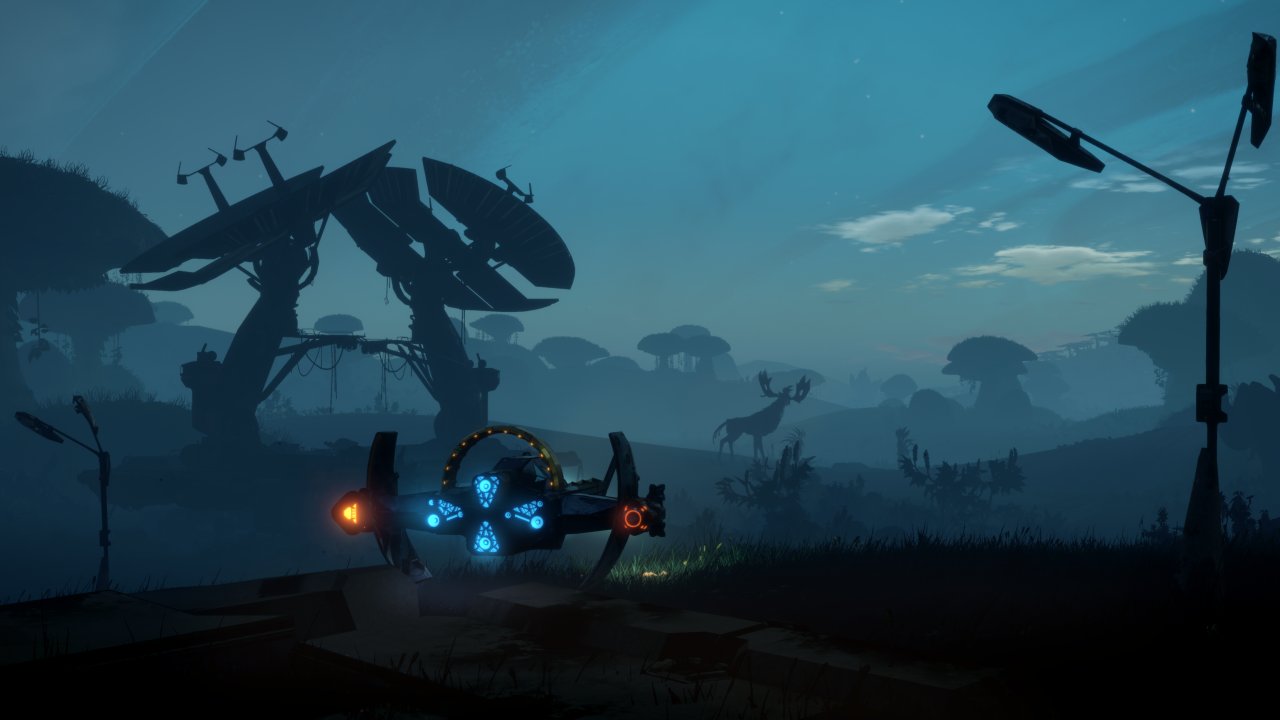
A number of Equinox upgrades also tie into the Starlink's meta-game of sorts, like equipping friendly factions with better weapons. That's because later on in the story, players will have to fight back the invasion of the Legion forces on each planet, indicated by a percentage. To do so, you'll need to return to each planet and upgrade all of the buildings, as well as eliminate the enemy presence. You can even build your own structures (one of the four types mentioned earlier) in order to boost specific bonuses, all again adding to the game's persistent feel. To take the fight to the enemy, you can go after big Prime monsters after defeating Extractor buildings that power them; once those are down across a few planets, you can attack the large Dreadnaught ship in space above the planets. This is all optional, but gives the game a bit more replay value.
There is a lot to do on each planet, but the game's biggest problem by far is the repetition. Everything you do on the first planet is exactly the same as you'll be doing on others. Whether it's a story mission or an optional task for an outpost, they are pretty much identical activities, and they are very shallow. You could be tasked with basic fetch quests, eliminating a group of foes, or defending a small area from a few waves of enemies. All Extractor structures are pretty much the same, all Prime monsters are the same, and all Dreadnaughts are the same. The mechanics are literally copy pasted across the entire game, so once you've seen and done something once, it will be repeated in the future again and again, with no variety to speak of. In fact, when the game decides to do something one-off and unique, it falters, like an annoying and out of place mission that requires platforming (where your ship can't take off due to a heavy object you're carrying).
If you've got a friend, you can explore the Atlas system together as the game supports drop-in/drop-out split-screen multiplayer. Those who opt for a physical version of the game can still play with a friend because that version unlocks a digital copy of the physical ship, so both players can take to the skies at the same time. The implementation here is basic, as it's local only, but it works well. You can't stray too far from each other, and it's helpful to be able to revive your co-pilot.
Starlink is a good looking game. Whether you're exploring the varied and brightly colored planet surfaces, or racing through the depths of space, the visuals are sharp and detailed, and only slightly stylized. You will be reminded of No Man's Sky's or perhaps ReCore's art style, but polished to a finer degree. The lighting systems are immersive and the combat can be quite visually diverse and explosive, with many attack effects looking similar to Destiny. Animations are solid as well, with satisfying moments when you swap out ship parts and return to the game to see them applied. As mentioned, cutscenes are also well made. Framerate holds steady. The audio design is equally solid, with some surprisingly nice selections on the soundtrack. Perhaps the only criticism is the game's UI – though some elements can be turned off, there are still a ton of items that often clutter your screen, like a large icon dead center in the middle when you're getting a message from the Equinox's computer, or the hacking progress icon when defending an area. And on the other hand, the UI does not do enough to indicate how close you are to death when in combat, apart from a nondescript bar in the corner.
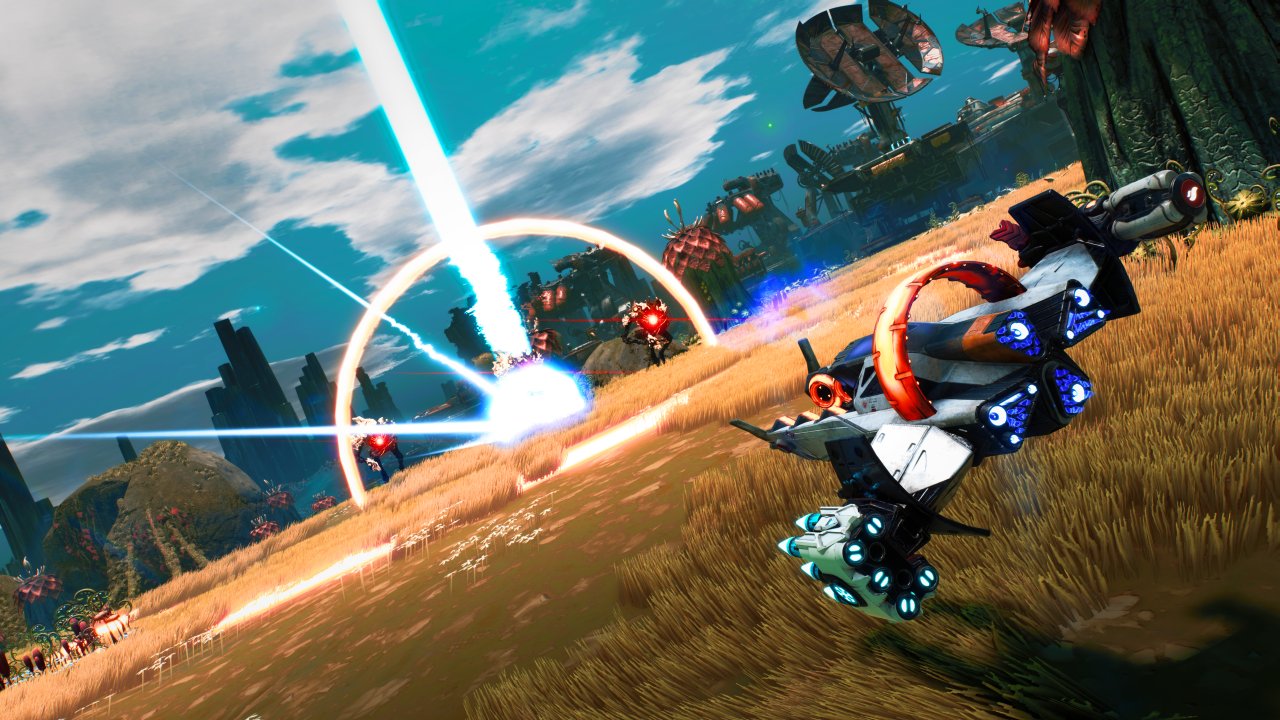
Assuming you're going for the Digital editions of the game, which you certainly should do, Starlink: Battle for Atlas is an enjoyable enough space adventure, but one that grows quite repetitive over time. Exploring the planets gets more boring when you realize that all content is the same, and there's nothing new apart from unique flora and fauna on each world. The customization is great and combat can be exciting and explosive, especially on the surface, but that isn't enough to overcome a predicable story and somewhat confusing leveling system that feels too slow. It's a very nice looking game though, with good audio design. If you're in desperate need of a fun space combat adventure or want something for a younger player, Starlink may appeal to some, but it's not without some problems to consider.
 Comments
Comments

















